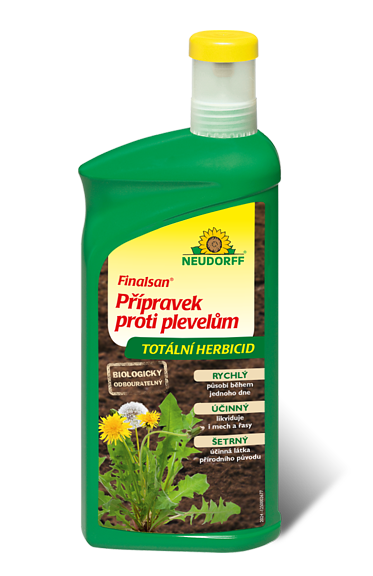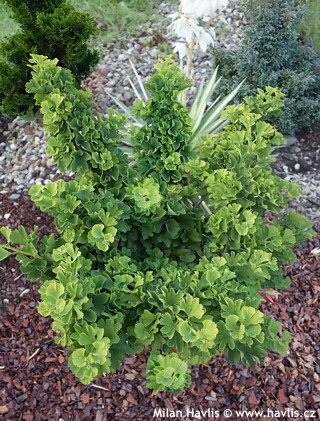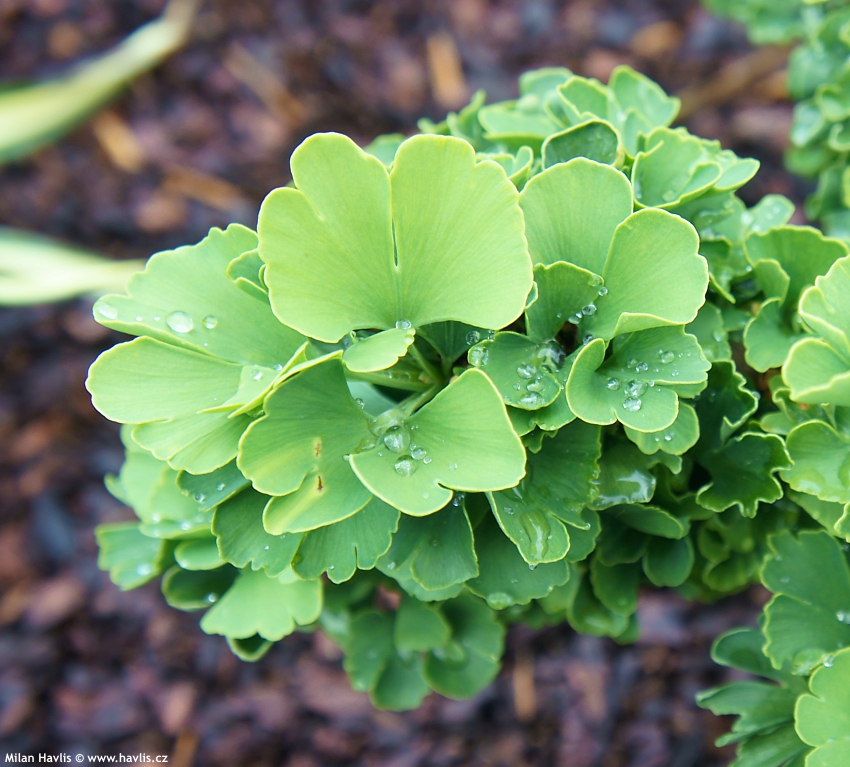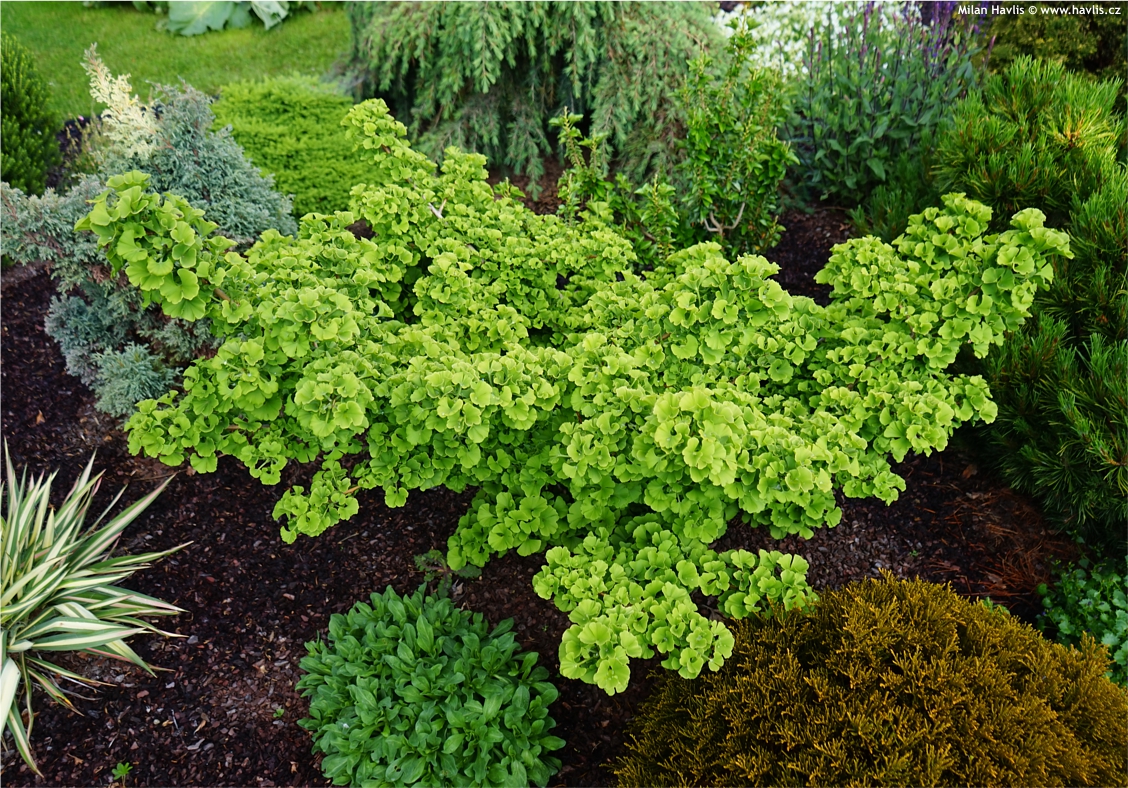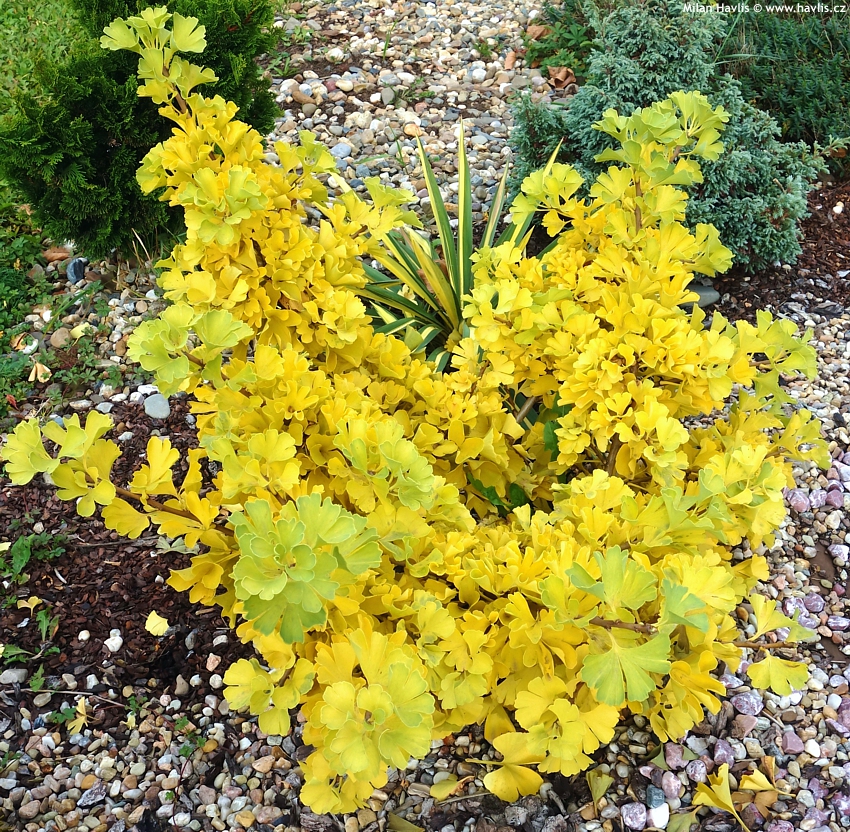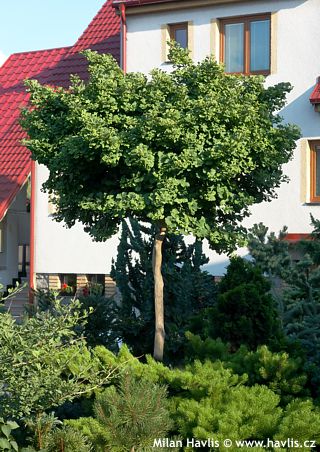Ginkgo biloba 'TROLL' dwarf maidenhair tree
usual height
1-1,5m
usual width
1-1,5m
leaves
deciduous conifer
colour of leaves
flowers
insignificant or non-blooming
location
full sun
soil type
any (acidic to alkaline)
USDA zone (lowest)
3 (down to -40°C)
winter protection
for zone 5+6
for zone 7
categorized
Ginkgo
The genus Ginkgo is a true botanical rarity. From what was once a numerous family, only a single species has survived – the maidenhair tree, Ginkgo biloba. Its lineage first appeared in the Jurassic period, more than 180 million years ago. Can you imagine that? Back when even the Dead Sea was still alive and kicking 😊, this tree was already here, enduring every geological and climatic upheaval. It reached Europe only in the 18th century, thanks to the German physician and botanist Engelbert Kaempfer (1651–1716), who brought it from Japan. Since then, it has become a symbol of longevity and resilience – no wonder, as individual trees can live for up to two thousand years. In modern breeding and among collectors, attention is paid not only to the plant shape and size, but also to their dazzling autumn colours.
Ginkgo has witnessed the extinction of the dinosaurs, survived ice ages and human civilizations, and yet has retained its face. In Japan it is regarded as a tree of hope – after the atomic bombing of Hiroshima, several specimens survived right in the epicenter (and they still grow there today), which is why it came to symbolize renewal and resilience. This resonated with post-war Europe, which had already fallen in love with exotic trees in the 19th century. Let us recall Johann Wolfgang von Goethe’s famous 1815 poem Gingo biloba, in which he likened the ginkgo leaf to the unity and duality of the human soul. The tree was planted as a rarity that evoked ancient times and fascinated with its fan-shaped leaves. Their form became a beloved motif in Art Nouveau and still adorns jewelry, textiles, and architectural details – much like the acanthus leaf became a hallmark of classical architecture in southern Europe. And it is worth noting that although ginkgo leaves have been used in traditional medicine for centuries, and in Europe are still processed into memory-supporting remedies, modern research shows their effect is far less miraculous than once believed (see studies by Steven T. DeKosky et al., published in the Journal of the American Medical Association in 2002 and 2008).
Description of the plant
The cultivar Troll of maidenhair tree is a true garden gnome. It grows extremely slowly and in maturity barely exceeds one meter in height and width, making it suitable even for the smallest garden. Although botanically classified among conifers, its “needles” are so broad and flattened that everyone calls them leaves without hesitation. The branches form a wide funnel and carry a dense mass of leaves as large as those of the non-dwarf species. They are fan-shaped and sometimes curl into little cones, creating a habit that, with a bit of imagination, resembles the rare cauliflower fungus (Sparassis). The leaves are matte, emerging fresh green in spring, settling into a pea-green shade in summer, and in autumn turning into a dazzling yellow that shines across the garden like a lantern. The variety originates from Germany, where it was bred in the 1990s (most likely at the Hörmann nursery), and its name alludes to the dwarf, bizarre appearance reminiscent of the mythical creature of Norse legend – the Troll.
In garden design, ‘Troll’ is a plant of surprise and playfulness. It stands out as a specimen in a Japanese-style garden, where it can evoke the character of a bonsai, but it also works beautifully in a rockery, contrasting with low, ground-covering perennials. It combines well with fine grasses that emphasize its quirky shape, or conversely with shrubs of neat form, such as hebes or sun-loving Japanese azaleas. Planted in a handsome container on a terrace, it becomes a living jewel that changes with the seasons. Trimming and shaping is best done in late winter.
Despite its exotic origin, maidenhair tree is surprisingly undemanding. It tolerates almost any type of soil, including heavy clay, and is unfazed by urban air pollution. It thrives best in a sunny spot with well-drained, moderately fertile soil. In containers it appreciates regular watering and occasional feeding but otherwise requires no special care. And importantly – unlike the female forms of large ginkgos, which can produce foul-smelling fruits, dwarf cultivars like ‘Troll’ are grafted exclusively from male plants, so there are no unpleasant surprises. Once established, it withstands drought as well as severe frost – surviving temperatures down to –40 °C without difficulty (USDA zone 3).
Last update 27-02-2010; 30-01-2012; 01-10-2025
WANT TO TRY A SIMILAR PLANT?






























